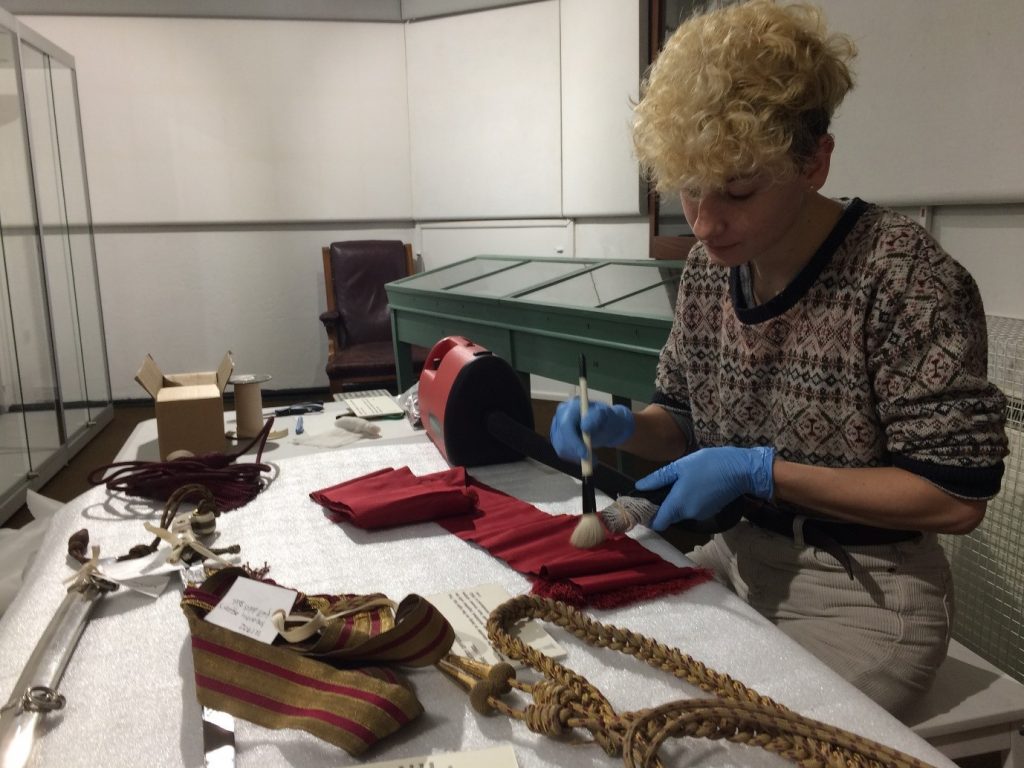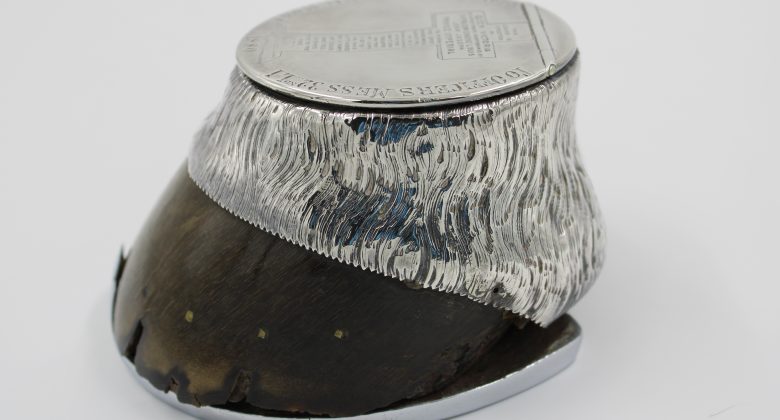Horse hoof snuff box
This snuff box has been made from the hoof of a horse, and then fitted with a silver ornamental lid and decorative shoe.
If we look at the lid a bit closer the inscription on the top reads:
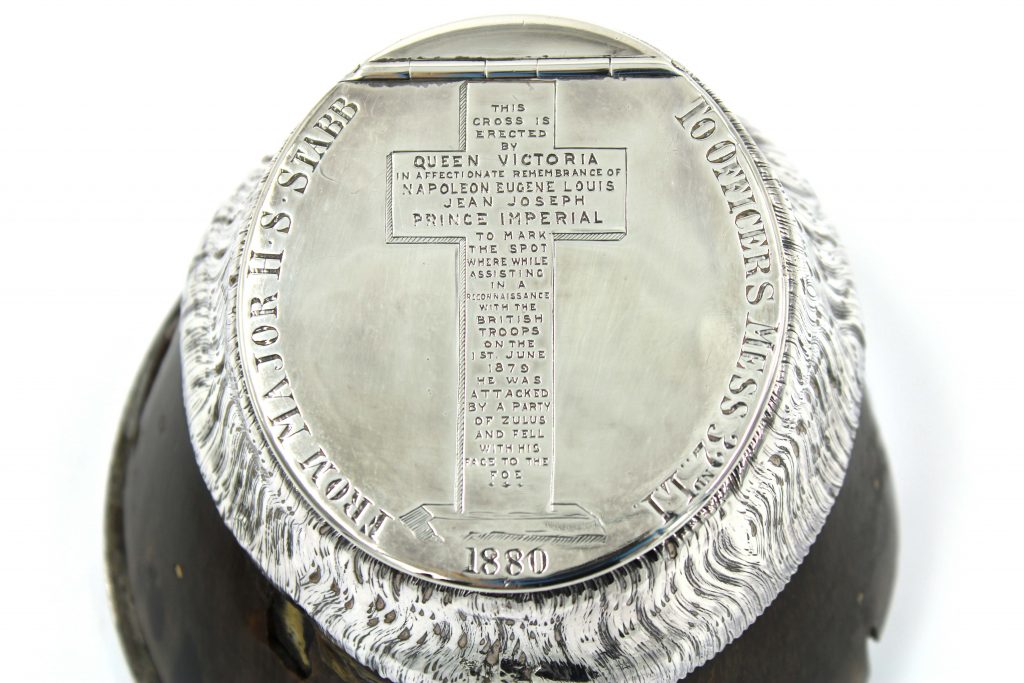
“From Major H.S. Stabb. To Officers Mess 32nd LI*. 1880.
This cross is erected by Queen Victoria in affectionate remembrance of Napoleon Eugene Louis, Jean Joseph Prince Imperial.
To mark the spot where while assisting in reconnaissance with the British Troops on 1st June 1879 he was attacked by a party of Zulus and fell with his face to the foe.”
*Note the 32nd LI (Light Infantry) was the precursor to the Duke of Cornwall’s Light Infantry.
If we open it up, on the inner side of the lid, there is another inscription:
“Horse of Trooper Abel, Bettington’s Horse, late 32nd LI. Killed with rider beside the Prince Imperial, Ityotyozi River, June 1st 1879.
The body of the Prince was found by Lieutenant Cochrane, 32nd LI.
The Queen’s Memorial Cross was erected by Major Stabb, 32bd LI”‘
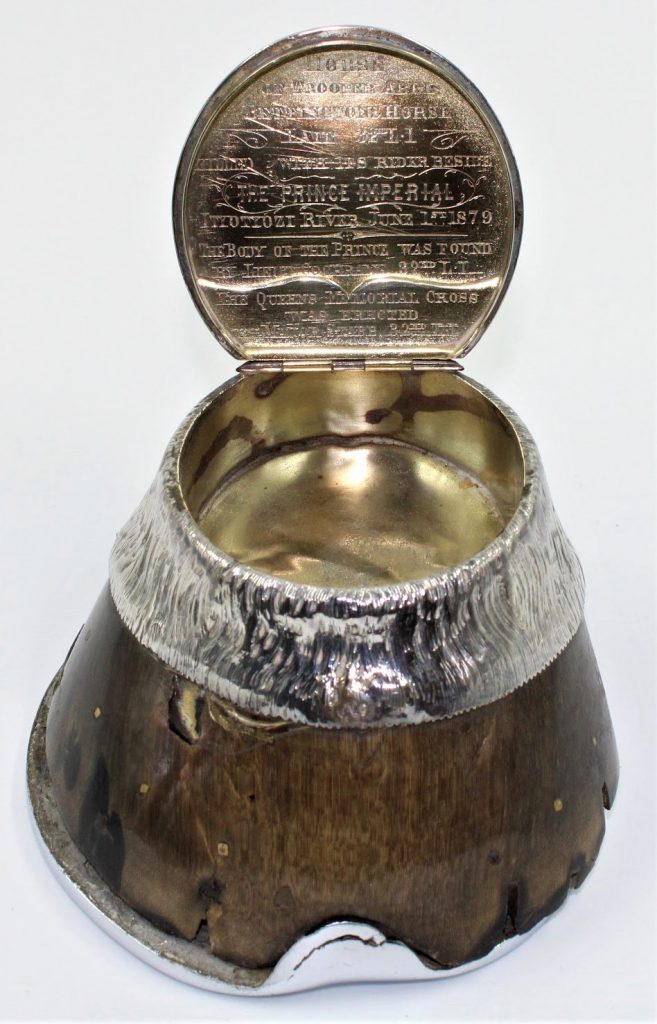
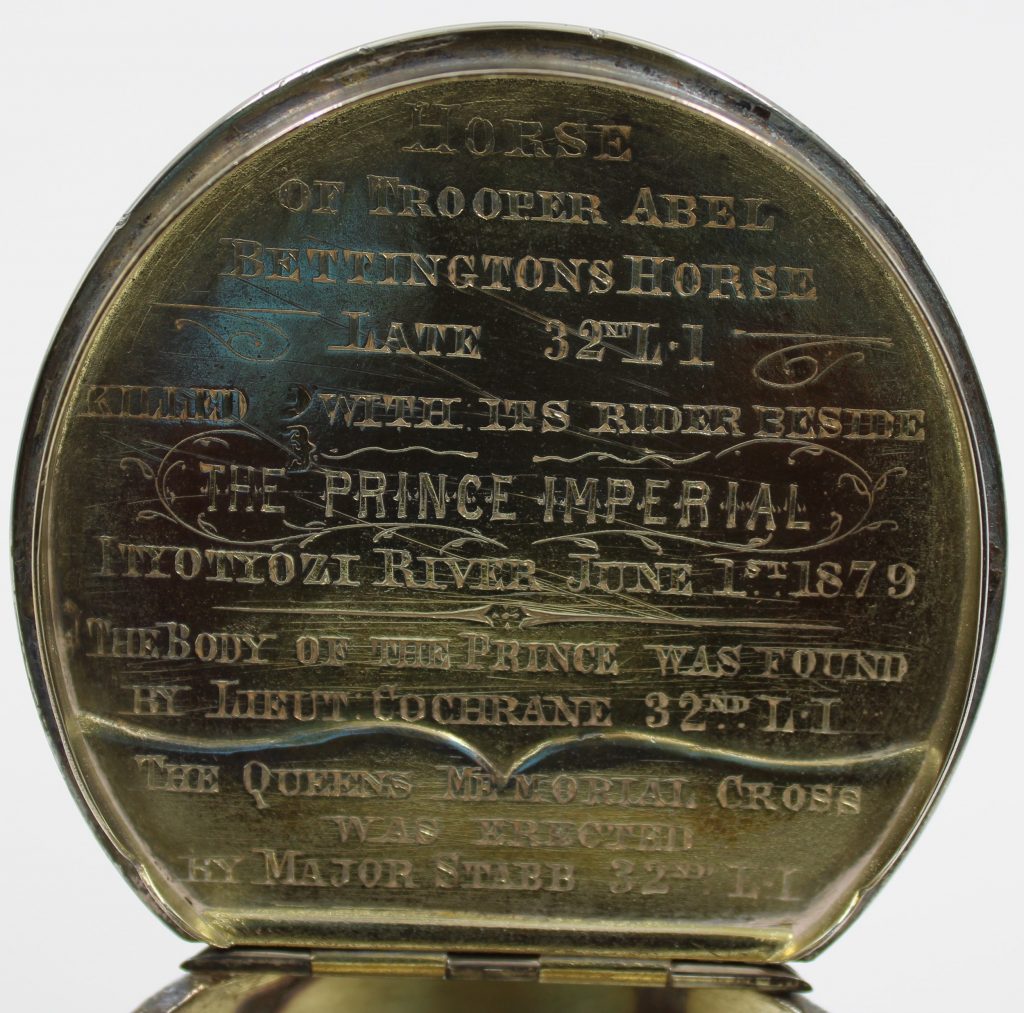
If we open it up, on the inner side of the lid, there is another inscription:
“Horse of Trooper Abel, Bettington’s Horse, late 32nd LI. Killed with rider beside the Prince Imperial, Ityotyozi River, June 1st 1879.
The body of the Prince was found by Lieutenant Cochrane, 32nd LI.
The Queen’s Memorial Cross was erected by Major Stabb, 32bd LI”‘
So we have lots of information here which gives us some insight into this object’s story, how it came to be made and why….
Imperialism
Let’s focus firstly on the date that is specified in the inscriptions: 1879. The British, seeking to expand Imperial control into South Africa, went to war with the Zulu kingdom in January 1879. The war was characterized by a series of bloody battles before a British victory. The British underestimated the skill of the Zulu warriors, who demonstrated formidable resistance, despite lacking the artillery and cavalry strength possessed by the British troops. Our horse hoof snuff box stands as a reminder of the strength of the Zulu warriors, as well as the recklessness and miscalculations of many of the British soldiers.
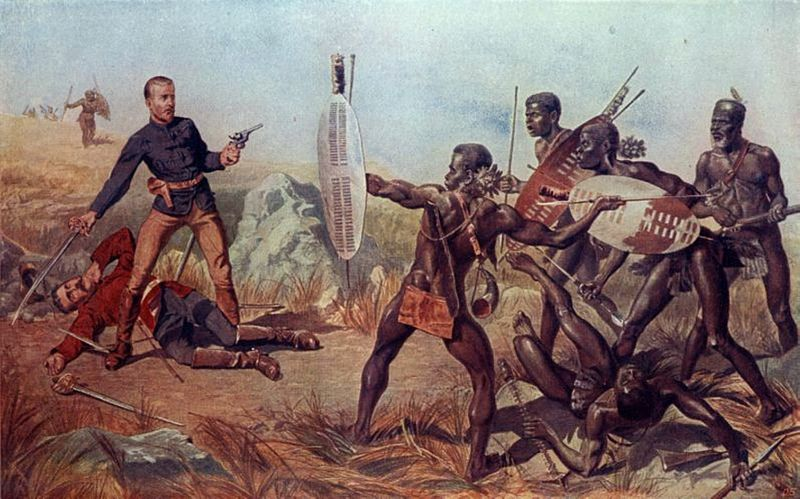
An Incident at the Battle of Isandlwana. Anglo-Zulu War, 22 January 1879. – Charles Edwin Fripp (1854–1906). This image is in the public domain from Project Guttenberg.
Prince Louis Napoleon (Prince Imperial) was the son of Napoleon III, who was the last French Monarch and first president of France. The Prince Imperial, who was living in England after his exile from France, wanted to go fight in South Africa and gain a reputation for himself there, in the hope that this would enable him to be reinstated in France. He was given permission to visit as a ‘spectator’ by Queen Victoria. However, he was considered far too zealous, and often would ignore orders. Colonel Redvers Buller recommended that the Prince be taken off reconnaissance work and be given desk work in the staff of Colonel Harrison, the acting Quartermaster General.
Harrison, noticing Louis’ resentment, suggested that he join the reconnaissance patrol going out on the 1st June to determine a campsite for the advancing troops, commanded by Major Bettington. However, Bettington had been called to another task without the knowledge that the Prince would be joining the patrol. Instead of a party of twelve commanded by the Major, a party of six (including the Prince) and a Zulu guide, were sent, with no commanding officer. In the afternoon, the patrol took a break near the Ityotyozi river, with no lookout posted. Suddenly they were ambushed by forty Zulu warriors. The Prince attempted to mount his horse but was killed along with Troopers Abel and Rogers. The other four men were able to escape. The following day, Lieutenant Cochrane with his men returned to the scene. The Prince was found with eighteen spear wounds and ritually disembowelled. The day after, he was buried.
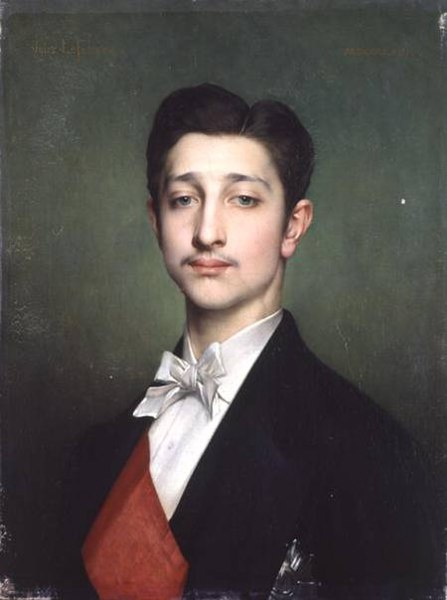
Louis-Napoléon Bonaparte (1856-1879) – Jules Lefebvre, Château de Versailles, 1874. This image is in the public domain.
A hoof from Trooper Abel’s horse was removed and made into this snuff box, as a memorial to the tragic event. In 1880, Queen Victoria erected a cross in remembrance at the site of the ambush. After searching through Bodmin Keep’s archives, correspondence from the 1960s was found between the Brigadier General at the Bodmin regimental museum and the curator at the Durban Museum in South Africa, Daphne Strutt. According to the letter exchange, research undertaken by Strutt shows that the wording and arrangement of the words of the inscription on the box lid, is exactly the same as the words on the memorial cross.
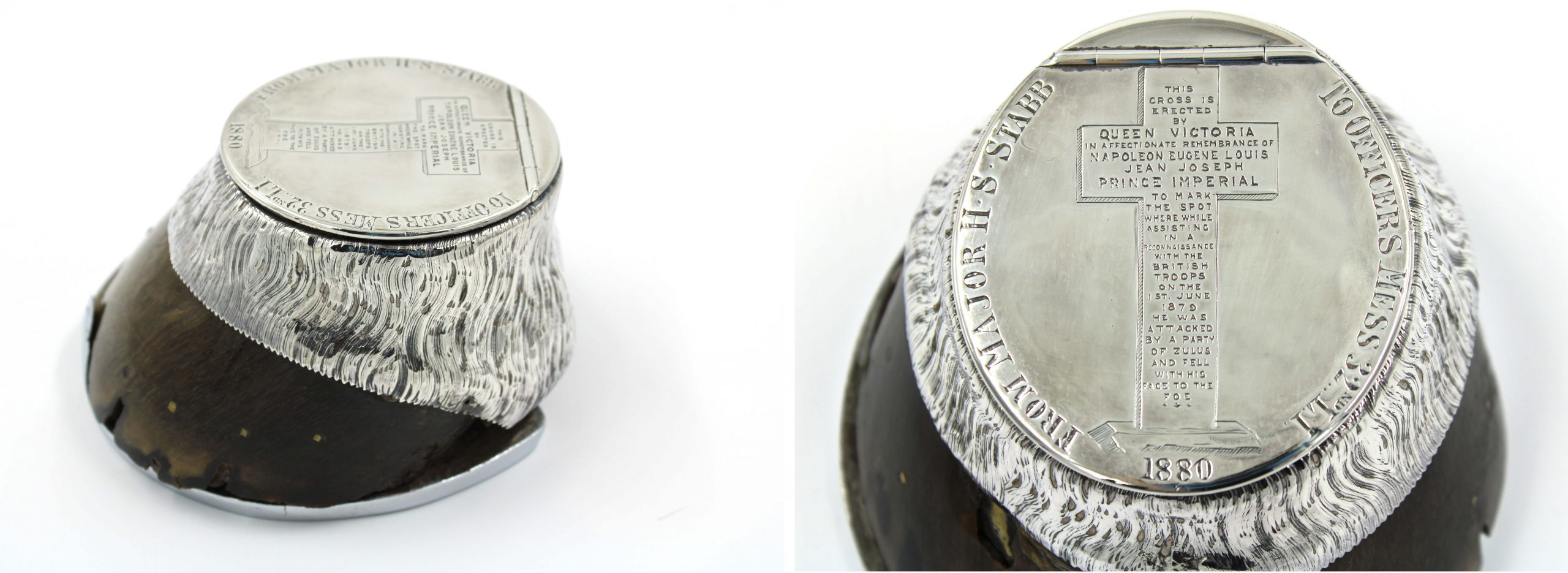
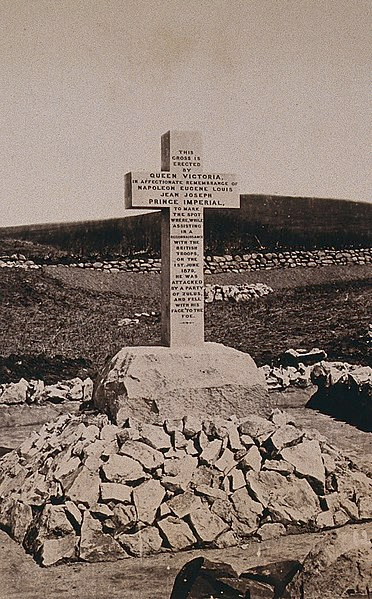
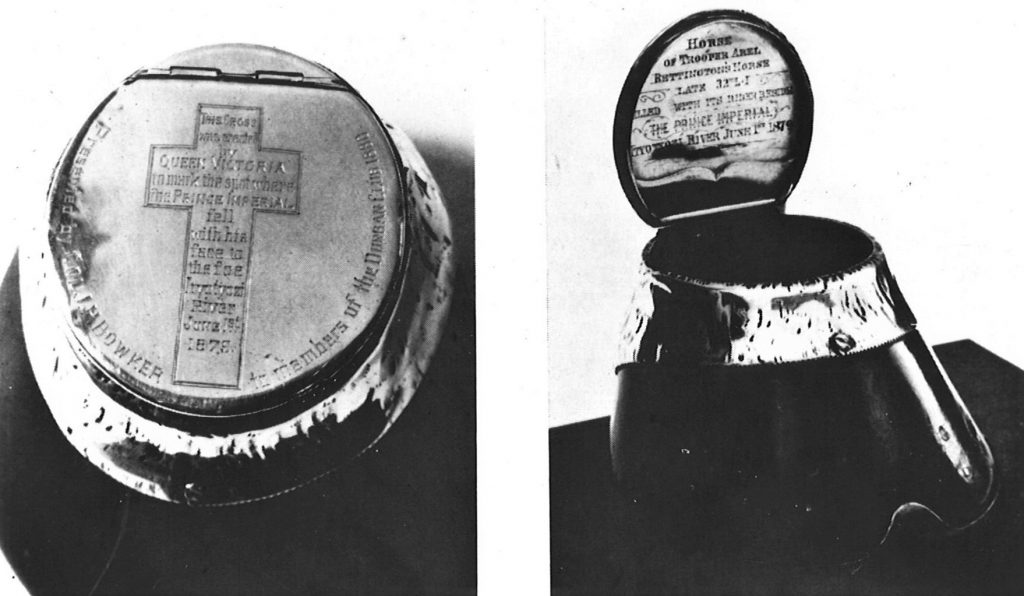
Strutt found another, almost identical horse hoof trophy taken from Trooper Abel’s horse in the collection at the Durban Museum. There is little doubt that they are made by the same craftsman, but there are differences in the inscriptions and the style of engraving. There is a slightly simpler design on the Durban Club box and fewer words on the cross and on the inscription inside the lid. However, the poetic turn of phrase is the same; the Prince ‘fell with his face to the foe’.
Not just a war time keepsake
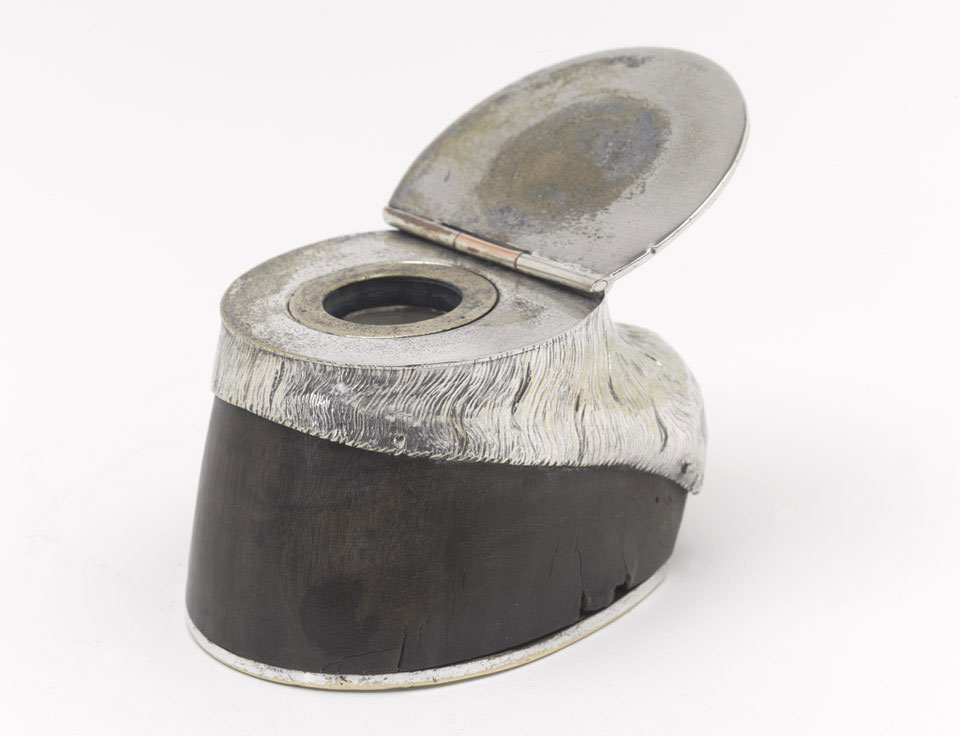
Silver-mounted hoof of ‘Jimson’ the mule, 2nd Battalion, The Middlesex Regiment, 1912 © National Army Museum [Image number: 129451]
There are a few reasons why horse hoof trophies like this one were made. It was popular in the 19th century to set important or meaningful objects relics in silver. They would then be used for decoration and display, as well as made into functional objects such as snuff boxes, inkwells, candle stick holders or ashtrays.
Often these objects provide some interesting insight between the personal, affectionate relationship between the officer and their horse. For example, above you can see an image of the hoof of ‘Comet’, the “favourite charge” of Lieutenant-Colonel Malden. It may seem strange for people in the 21st century, as pet owners are unlikely to do this with their pets today, but it was fairly common in the Victorian era. Often inscribed with the name of the horse, horse hoof trophies show us that the horses were not just thought of as purely functional or simply elements of army machinery, they were often considered pets and a bond was created between officer and steed.
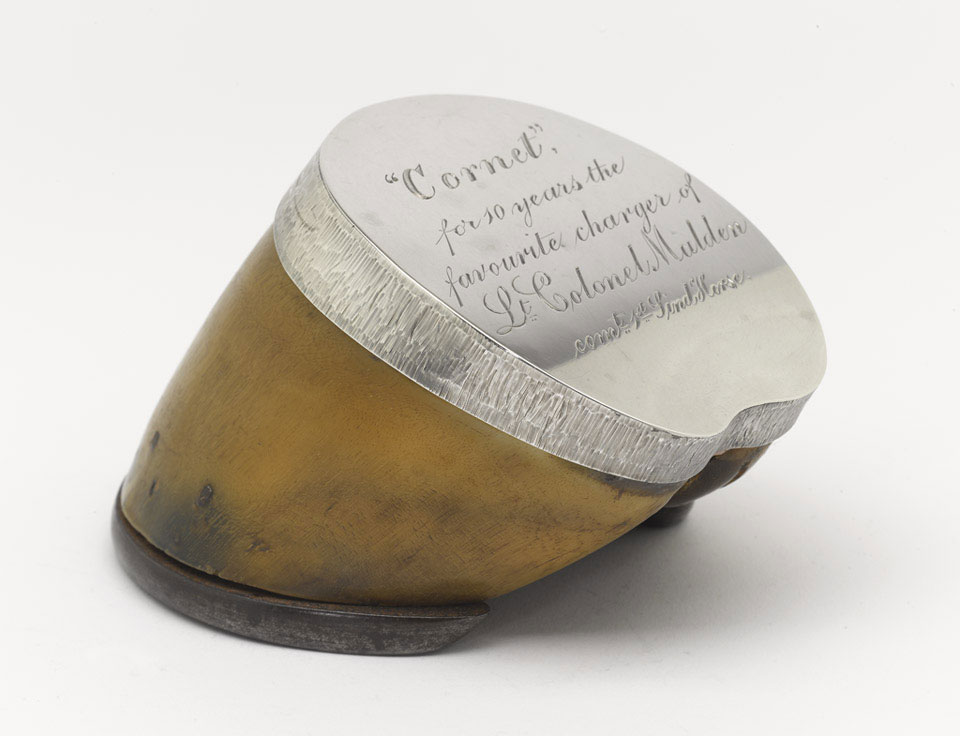
Silver-mounted hoof of ‘Cornet’, the horse of Lieutenant-Colonel Malden, 1st Sind Horse, 1880 © National Army Museum [Image number: 129492]
However, for our horse hoof snuff box at Bodmin Keep, the name of the horse is not known because it is not inscribed upon the silver. As the trophy was commissioned by Major Stabb, who was not present during the ambush, and Trooper Abel, the rider, died with his horse, we can assume that this particular trophy was not a memorial to the horse that died. It is made as a relic to commemorate the significant death of a royal.
Removing the hoof
The hooves of horses were often removed post-battle for several practical reasons. Retrieving the hoof of a horse would prove the horse actually died, rather than being sold by a soldier who wanted some extra cash. Furthermore, collecting hooves post-battle could also assist the Quartermaster, who was in charge of distributing army supplies. The number of hooves brought back from a battlefield would be counted and this would give a definitive figure for the number of horses which died. The hooves on a horse would have also been branded with inventory numbers which would indicate what role it played in the battle. For example, it would identify whether it was an artillery horse or a cavalry mount. It would also indicate which regiment it belonged to. Bringing back the hooves would provide valuable information to ensure the horse could be replaced efficiently, swiftly preparing the regiment to go back into battle.
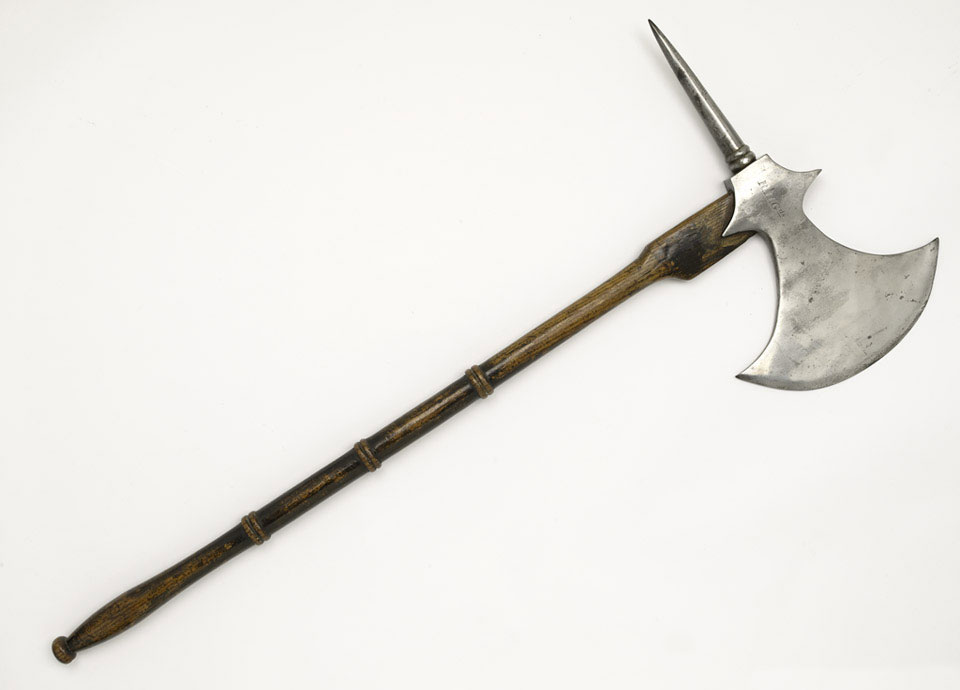
A farrier was responsible for returning to the battle site to retrieve the hooves of the fallen horses. Farriers combined veterinary knowledge with blacksmithing skills to prepare and fit the horse’s horseshoes. They were often non-commissioned officers who served with cavalry and artillery regiments. A farrier’s axe had a long spike at one end, which would be used to put a severely injured horse out of its misery. On the other side there was a sharp blade which was used to remove the horse’s hoof.
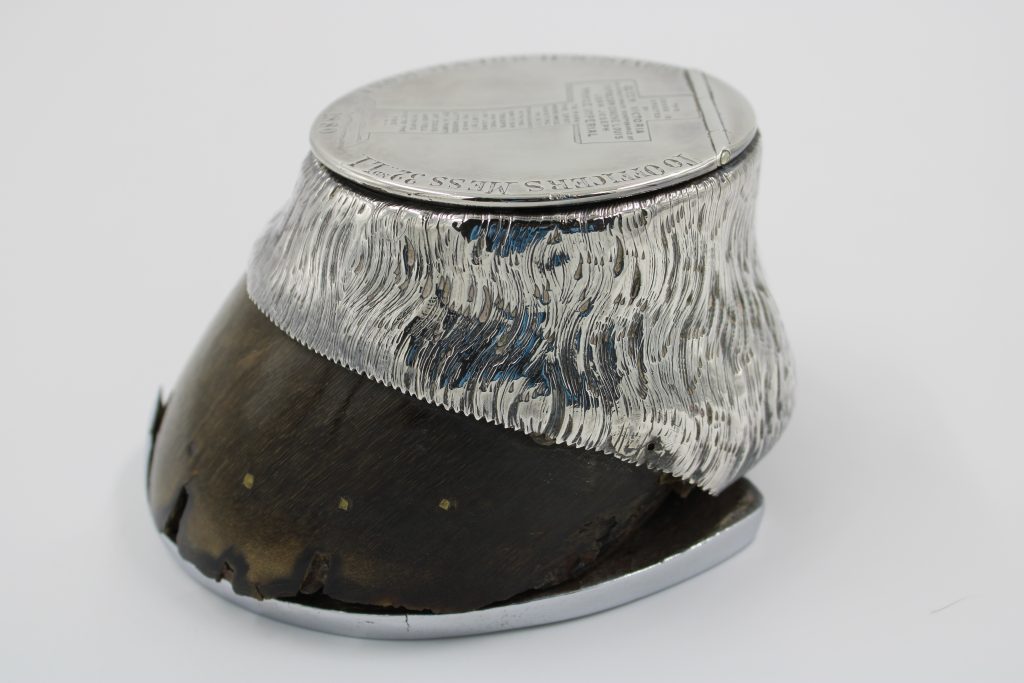
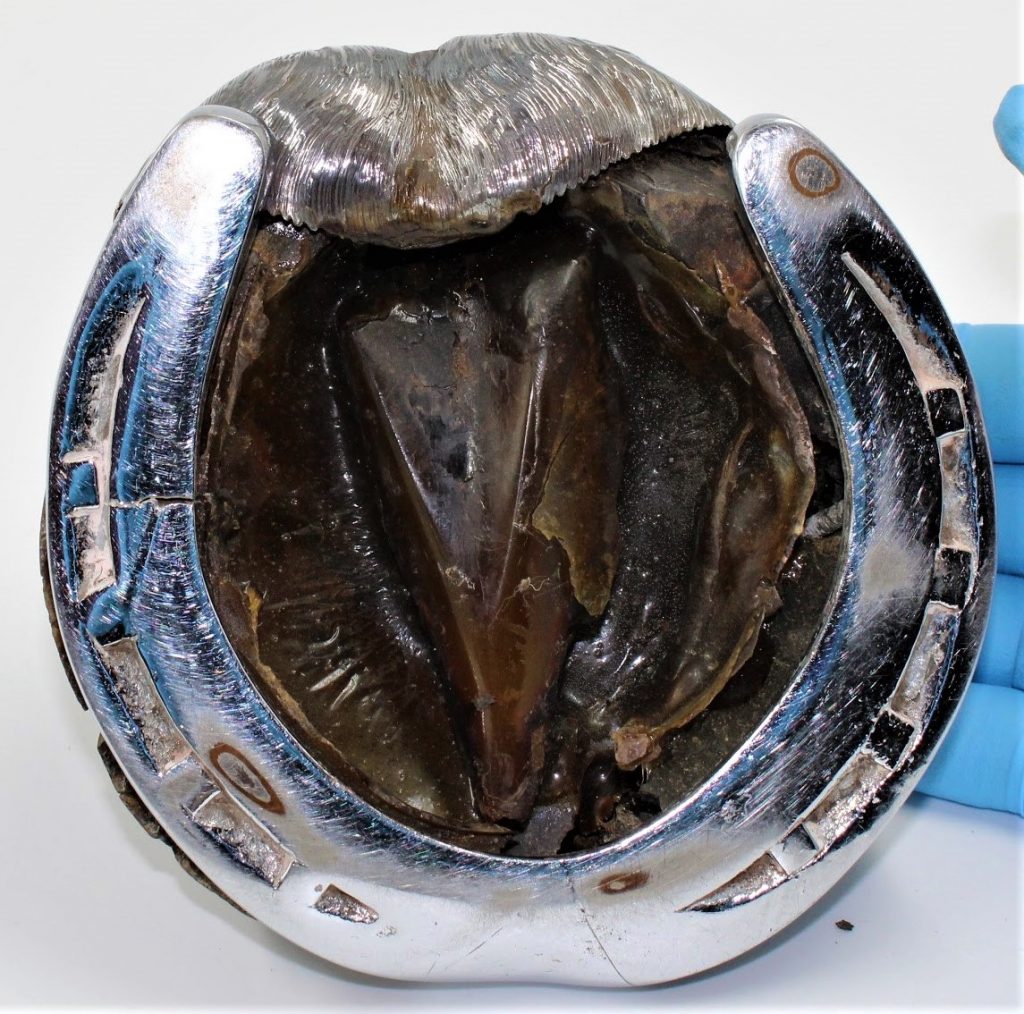
Once the hoof had been analysed, it would be sent to a trophy maker, should the officer want to preserve it as a memento. A horse’s hoof will reduce in size during the preservation process, therefore, an experienced specialist was required to fit the ornamental shoe. As we can see from the intricate silverwork mimicking the horse hair on top of the hoof of the snuff box, an expect silversmith was required to finish the ornament.
Our horse hoof snuff box is a fascinating object with plenty of stories to tell. It records a significant historical event: the death of the Prince Imperial. It provides a wider context to the actions of the British Army in South Africa during the Anglo-Zulu war. It has been a prompt for an international exchange of ideas between curators. Finally, it gives us some insight into how and why horse hoof trophies were made.
If you are interested in seeing the horse hoof snuff box, it is permanently on display in Gallery 1 at Bodmin Keep. It is exhibited as part of our online exhibition titled Souvenirs and Spoils.
You can also watch Sarah talk all about the Horse Hoof Snuff Box on You Tube here
By Sarah Waite, Curatorial Intern
